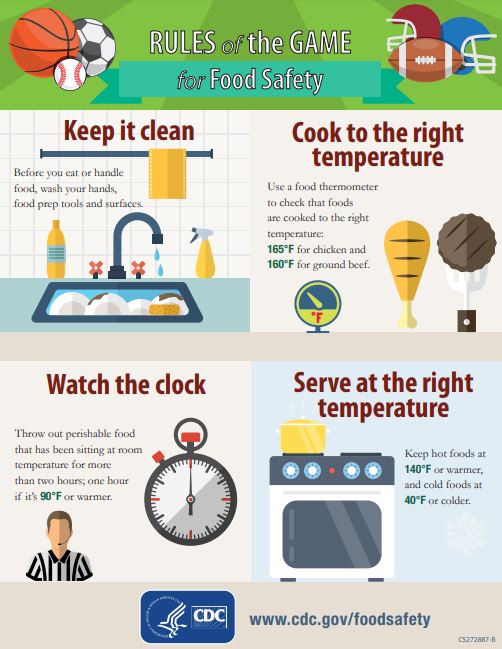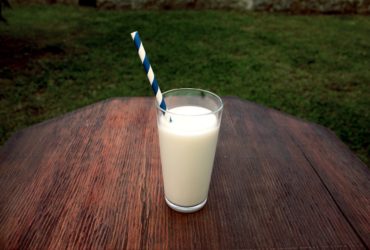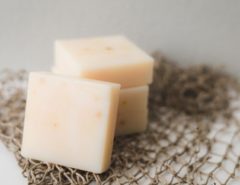By: Katie Macdonald
Torisashi, a dish introduced by the Japanese where strips of chicken are not thoroughly cooked but singed, leaving an uncooked pinkish inside, recently appeared in United States restaurants.
In Japanese, the word torisashi literally means ‘bird’ or ‘chicken’. The Japanese are no stranger to coming up with inventive meals for example sushi. The torisashi dishes and its variations, however, might just be on another level.
While to many, this meal is delectable and enticing, others have expressed concerns about how safe it is to consume meat that is not thoroughly cooked. Since this is a new dish, it is vital to bring awareness of the ramifications of eating raw meat.
To avoid food poisoning, diseases, and other health issues that may arise as a result of this consumption, we have some points for you to consider before having such a meal.
Let’s Avoid Diseases

Source: https://www.cdc.gov/foodsafety/pdfs/rules-of-the-game-infographic-508c.pdf
Salmonella and Campylobacter are two of the most common bacteria contracted from eating raw chicken, but they are not the only ones. One could also contract Staphylococcus aureus, Enterococcus, E. coli, and Klebsiella, diseases known to present itself after the consumption of raw meat.
Common symptoms associated with these bacterial infections include:
- diarrhea
- fevers
- headaches
- muscle pain
- vomiting
- bloating
- bloody stools

Source: https://www.cdc.gov/foodsafety/pdfs/food-Safety-symptoms-P.pdf
CDC estimates that each year 48 million people get sick from foodborne illness, 128,000 are hospitalized, and 3,000 dead. While these possibilities do exist, it is essential to know what to do to avoid them; and the proper precautions to take to save lives or at least save a trip to the hospital.
The proper way to defrost a frozen chicken:
- Defrost your chicken by removing it from the freezer to the bottom of the refrigerator in a container that will prevent cross-contamination.
- You can also thaw the chicken by using a microwave between 40 and 160 Degrees and cooking the chicken immediately afterward.
- The last method we recommend is placing the chicken in a resealable bag, placing the bag in a container of water in the kitchen sink, and changing the water frequently.
Preparations and Precautions when handling raw chicken:
- After removing food from the packaging, dispose of the plastic wrapper to avoid the juice from the meat getting on other food items and kitchen surfaces.
- Use a cutting board designated for cutting raw meat, not including fish, and thoroughly wash the board and immediately after use. Allow to air dry.
- Wash your hands carefully before using a sharp knife to separate the meat. The knife used to cut the meat must be washed immediately and not used to cut or prepare any other food items.
- Clean surfaces, utensils, and containers that may have come in contact with the chicken immediately after use. Be sure to use soapy water or avoid contact as you prepare other dishes.
- To ensure bacteria and microorganisms are destroyed, ensure the chicken is heated to an internal minimum temperature of 165°F. This can be checked using a thermometer.
- Ensure the same knife you use to prepare the meat is not the same one used in serving the chicken without being properly washed. This will avoid cross-contamination.
- Move unused chicken to the refrigerator within 1 hour of it cooling down, if you decide to store it for later use.
While a case of food poisoning sometimes goes away on its own after much fluid intake, there are people who have died from foodborne diseases. These ailments show the importance of avoiding meat not cooked at the recommended temperature and saving, especially young people and the elderly, from the experience of contracting a foodborne disease.
A meal like torisashi and similar dishes should be avoided to keep up with the best health practices. These best practices will protect not only us but also our loved ones and keep us healthy and bacteria-free.
 Katie C. MacDonald | Linkedin | Website
Katie C. MacDonald | Linkedin | Website
Guest Article Writer
Katie graduated from Louisiana State University with degrees in Mass Communication and Print Journalism. Katie is a blogger and nutrition enthusiast, with the ultimate goal as a writer to provide people with the best evidence-based diet & nutrition information. She was previously an assistant editor for Food52 and editor for Popular Mechanics.






Leave a Reply